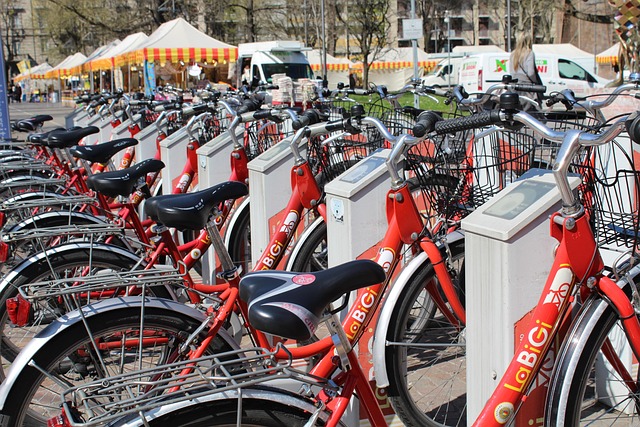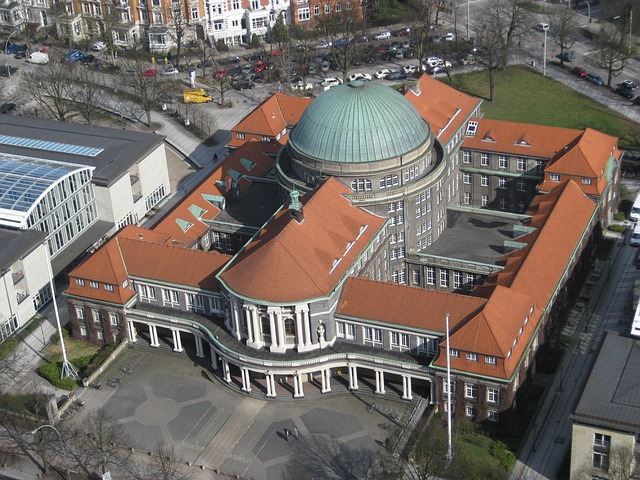
Category: The Green Student: Sustainable Living in Your College Rental
The Green Student: Sustainable Living in Your College Rental
Introduction
Welcome to an exploration of sustainable living for students in college rentals, a topic that has gained significant traction in recent years. As the world grapples with environmental challenges, the concept of “The Green Student” – emphasizing eco-conscious practices within student accommodation – has emerged as a powerful movement. This article aims to guide you through the intricacies of creating an environmentally friendly living space during your college years, offering insights that will not only benefit individual students but also contribute to a global sustainable future. By the end, you’ll understand how every choice in your rental can make a difference, from energy-efficient appliances to recycling programs, and discover ways to advocate for greener options in your community.
Understanding The Green Student: Sustainable Living in Your College Rental
Definition and Core Components
“The Green Student: Sustainable Living in Your College Rental” refers to the proactive approach students take to minimize their environmental impact while residing in college accommodation. It involves adopting practices and making choices that promote sustainability, conserve natural resources, reduce waste, and encourage eco-friendly behavior among peers. The core components include:
- Energy Conservation: Utilizing energy-efficient appliances, LED lighting, smart thermostats, and simple habits like turning off lights and electronics when not in use.
- Water Efficiency: Implementing water-saving fixtures, fixing leaks, and adopting practices like shorter showers and responsible laundry habits.
- Waste Reduction: Practicing recycling, composting, and minimizing single-use plastic consumption, along with proper waste segregation.
- Sustainable Transportation: Opting for walking, cycling, carpooling, or using public transport instead of personal vehicles whenever possible.
- Eco-Friendly Decor and Furniture: Choosing second-hand or sustainably sourced furniture, non-toxic cleaning products, and natural, eco-friendly decor items.
- Community Engagement: Participating in local environmental initiatives, volunteering for campus sustainability programs, and raising awareness among peers.
Historical Context and Significance
The idea of sustainable living has evolved over the past few decades, gaining momentum with growing environmental concerns. In the context of college rentals, it emerged as a response to the unique challenges students face in fostering environmentally friendly habits while away from home. Historically, student accommodations have often been criticized for their lack of energy efficiency and wasteful practices. However, with increasing awareness and the influence of youth activism, “The Green Student” movement has gained traction, pushing for change at individual, institutional, and policy levels.
Today, this initiative is significant for several reasons:
- Environmental Impact: College students, collectively, represent a substantial portion of the youth population, and their actions can significantly influence long-term environmental outcomes.
- Early Adoption: Students are often early adopters of new trends and technologies, making them ideal ambassadors for sustainable living practices.
- Institutional Change: Student advocacy has led to many colleges and universities adopting more sustainable policies and infrastructure, benefiting both the student body and local communities.
- Personal Growth: Engaging in sustainable living fosters critical thinking, problem-solving skills, and a deeper connection to one’s impact on the environment.
Global Impact and Trends
International Influence
“The Green Student” concept transcends national boundaries, with students worldwide embracing sustainable living initiatives. This global trend is shaped by shared environmental challenges and a growing awareness of climate change. According to a 2022 report by the United Nations Educational, Scientific and Cultural Organization (UNESCO), over 500 universities in more than 60 countries have committed to achieving carbon neutrality, demonstrating a significant international push for sustainable practices on campuses.
Regional Trends
- North America: Leading the way in sustainability, many US and Canadian colleges have implemented comprehensive recycling programs, renewable energy sources, and green building standards. The Green Building Council’s LEED (Leadership in Energy and Environmental Design) certification is widely adopted, ensuring new constructions meet high eco-friendly criteria.
- Europe: With a strong focus on reducing carbon emissions, European institutions are promoting electric vehicle charging stations, smart meters, and sustainable food options. The EU’s Horizon Europe program provides funding for innovative green projects, fostering collaboration among universities across the continent.
- Asia: Rapid urbanization presents unique challenges, but Asian countries like China and Japan are making strides in sustainable student housing. This includes implementing energy-efficient technologies, green roofs, and community-based recycling programs.
- Australia and New Zealand: Known for their natural beauty, these regions are embracing eco-friendly practices with a focus on water conservation and renewable energy sources. Indigenous environmental knowledge is also being incorporated into sustainability initiatives.
Economic Considerations
Market Dynamics
The integration of sustainable practices in college rentals has significant economic implications. The global market for green building materials and technologies is booming, with a projected value of USD 253 billion by 2027, according to Grand View Research. This growth is driven by rising environmental awareness and government incentives promoting eco-friendly infrastructure.
Investment Patterns
Investors are increasingly focusing on sustainable assets, recognizing their long-term financial and environmental benefits. Student accommodations with energy efficiency ratings and green certifications are attracting more investment, leading to improved infrastructure and higher property values. A 2021 study by the Global Real Estate Sustainability Benchmark (GRESB) revealed that real estate investors are increasingly allocating capital to sustainable buildings, with student housing as a notable segment.
Economic Systems and “The Green Student”
“The Green Student” initiative contributes to economic systems by fostering innovation, creating green jobs, and driving market demand for sustainable products and services. It encourages local businesses to develop eco-friendly solutions, from energy-efficient appliances to organic food production. This shift can lead to:
- Job Creation: In industries related to renewable energy, recycling, and sustainable construction.
- Cost Savings: For students through reduced utility bills and for institutions through long-term operational cost savings.
- Market Competitiveness: As colleges and universities strive to attract students, eco-friendly amenities become increasingly important selling points.
Technological Advancements
Smart Homes and IoT
The Internet of Things (IoT) is revolutionizing sustainable living in college rentals. Smart home devices allow students to monitor and control energy usage, water consumption, and lighting, often via mobile apps. These technologies enable personalized adjustments, optimizing resource use and reducing waste. For instance, smart thermostats learn individual preferences, adjusting settings to enhance comfort while minimizing energy costs.
Renewable Energy Solutions
Advancements in renewable energy sources are making them more accessible and affordable for student accommodations. Solar panels on rooftops or community-scale wind turbines can significantly reduce carbon footprints. Some colleges are even integrating microgrids, allowing students to generate and share clean energy, fostering a sense of collective responsibility.
Digital Tools and Apps
Numerous apps have emerged to support sustainable living. From tracking personal waste production to finding nearby recycling centers, these tools empower students to make eco-conscious choices. For example:
- Recycling Apps: Like Too Good To Go helps users find surplus food from local restaurants, promoting responsible food waste reduction.
- Energy Monitoring Apps: Some provide real-time data on energy consumption, helping students understand their usage patterns and identify areas for improvement.
- Sustainable Shopping Guides: Apps offering eco-friendly product recommendations based on user preferences and location assist in making sustainable choices during everyday activities.
Policy and Regulation
Governing Bodies and Frameworks
Key policies and regulations shaping “The Green Student” landscape include:
- National and Regional Agreements: Many countries have signed international agreements like the Paris Climate Agreement, setting targets for reducing greenhouse gas emissions, which indirectly impact student accommodations.
- Local Ordinances: Cities and municipalities often implement specific rules regarding building codes, energy efficiency standards (e.g., ENERGY STAR), and waste management practices, directly influencing college rentals.
- Institutional Policies: Universities and colleges develop their sustainability policies, setting goals for carbon neutrality, waste reduction, and eco-friendly procurement, which students can actively support and contribute to.
Influence on Development
These policies provide a framework for implementing sustainable practices in student housing:
- Building Standards: Mandating energy-efficient design, green materials, and proper waste management systems during construction or renovation.
- Incentives and Subsidies: Governments may offer financial incentives to landlords who incorporate eco-friendly features, making sustainable rentals more affordable for students.
- Reporting Requirements: Some regions demand regular sustainability reporting from institutions, ensuring transparency and accountability in their environmental efforts.
- Research Funding: Supporting research into sustainable technologies and practices, which can lead to innovative solutions tailored to student housing needs.
Challenges and Criticisms
Main Issues
Despite its benefits, “The Green Student” initiative faces several challenges:
- Initial Costs: Implementing eco-friendly features in existing buildings or adopting renewable energy sources can be expensive, posing a barrier for both landlords and students.
- Lack of Awareness: Some students may not fully comprehend the environmental impact of their choices, requiring education and awareness campaigns to engage them actively.
- Incentives for Landlords: Convincing property owners to invest in sustainability without government incentives or guaranteed returns can be challenging.
- Consistency Across Institutions: Ensuring all colleges and universities adhere to similar green standards remains an ongoing struggle, as policies vary widely between regions and institutions.
Proposed Solutions
Addressing these challenges requires a multi-faceted approach:
- Financial Incentives: Governments and institutions should provide grants, subsidies, or tax benefits to encourage landlords to make eco-friendly upgrades.
- Education and Awareness: Schools can incorporate sustainability into curricula, organize workshops, and promote green initiatives to foster student participation and understanding.
- Collaborative Efforts: Partnerships between students, landlords, and local authorities can drive change, sharing responsibilities and resources for sustainable solutions.
- Standardized Policies: Developing comprehensive, consistent policies at the national or regional level will ensure fair practices across all student accommodations.
Case Studies: Successful Implementations
Green Campus in Denmark
A leading example is Aarhus University in Denmark, recognized as a global leader in sustainability. The university has implemented an extensive green initiative, including:
- Eco-Friendly Buildings: All new constructions adhere to the BREEAM environmental assessment method, ensuring high eco-friendly standards.
- Renewable Energy: The campus utilizes wind energy and solar panels, aiming for 100% renewable electricity by 2025.
- Waste Management: A comprehensive recycling program, including food waste composting, has reduced landfill waste by 90%.
- Sustainable Transport: Encouraging cycling with dedicated paths and facilities, as well as electric shuttle buses, has decreased carbon emissions from student commuting.
Sustainable Living in Australia
The University of Melbourne’s “Sustainable Living Project” is another inspiring case. They’ve transformed a traditional residential hall into an eco-friendly hub:
- Energy Efficiency: LED lighting, smart thermostats, and energy-efficient appliances reduce electricity consumption by 30%.
- Water Conservation: Low-flow fixtures and rainwater harvesting systems cut water usage significantly.
- Waste Reduction: A comprehensive recycling program, including electronic waste collection, has increased recycling rates to over 80%.
- Community Engagement: Regular sustainability workshops and events foster a culture of eco-consciousness among students.
Future Prospects: Emerging Trends
Growth Areas
The future of “The Green Student” looks promising with several growth areas:
- Smart Cities and Campuses: Integration of IoT technology will further enhance sustainable living, allowing for real-time data analysis and personalized resource management.
- Green Finance: As investors demand more sustainable options, student accommodations will benefit from access to green bonds and ESG (Environmental, Social, Governance) investment funds.
- Community Engagement: Student initiatives will continue to drive change, with a focus on community-led projects and partnerships with local environmental organizations.
Emerging Trends
- Net Zero Emissions: Institutions will strive for net zero carbon emissions, going beyond carbon neutrality by actively removing greenhouse gases from the atmosphere.
- Biophilic Design: Incorporating natural elements into student accommodations can enhance well-being and foster a deeper connection to the environment.
- Circular Economy: Promoting recycling, upcycling, and responsible consumption practices will be integral to sustainable living on campuses.
- Digital Sustainability Platforms: Online platforms connecting students, landlords, and sustainability experts will facilitate knowledge sharing and collaborative projects.
Conclusion: The Power of Individual Action
“The Green Student: Sustainable Living in Your College Rental” is more than just a trend; it’s a movement that empowers students to make a tangible difference in their communities and the world. By adopting eco-friendly practices, individuals can contribute to broader environmental goals while developing valuable skills for a sustainable future. This article has provided insights into the various facets of this initiative, from global trends to practical solutions, highlighting its relevance and potential.
Remember, every choice matters – from the energy-efficient light bulb you install to the recycling program you advocate for. As a “Green Student,” your actions can inspire change, influence policy, and shape a more sustainable future. Embrace these challenges, join forces with like-minded individuals, and together, let’s create a greener, more resilient world, one college rental at a time.
FAQ Section
Q: How can I make my college rental more energy-efficient on a budget?
A: Start with simple changes like switching to LED bulbs, using power strips for electronics, and adjusting thermostats. Consider asking your landlord about energy-efficient upgrades or negotiating lower utility bills based on improved efficiency.
Q: What are some creative ways to reduce food waste in student accommodations?
A: Implement a sharing system where students can exchange leftovers, organize community gardens, or participate in campus food waste reduction programs. App-based solutions for food donation and recycling can also help minimize waste.
Q: How can I convince my landlord to invest in sustainable practices?
A: Educate your landlord about the long-term benefits of sustainability, including reduced operational costs and increased tenant satisfaction. Provide local examples of successful green initiatives and offer to assist with implementation.
Q: Are there any global standards for eco-friendly student accommodations?
A: While specific standards vary by region, international agreements like the UN Sustainable Development Goals (SDGs) provide a framework for sustainable development, which includes environmental education and responsible consumption. Some countries have adopted green building ratings systems, offering guidelines for eco-friendly student housing.









